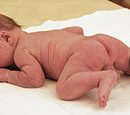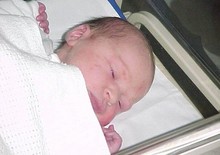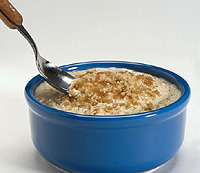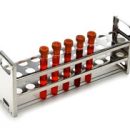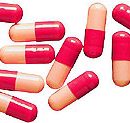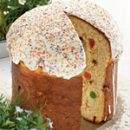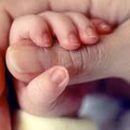What caused the disease of homocystinuria? What are the symptoms of this disease? How to treat him? Read in this article.
Content
Causes
As a result of a decrease in the activity of a special liver enzyme (cystaonixintases), methionine and homocystin are accumulated in the child's body, which have a damaging effect on a number of organism systems (bone and central nervous systems), which leads to the development of homocystinuria.
Manifestations
Appear gradually during the first year of the child's life in the form of a low-rise lag in weight and growth. In this case, the child's appetite remains normal, the functions of the gastrointestinal tract do not suffer, but all attempts to improve the nutrition of the child with additional administration of the protein in the form of cottage cheese or kefir only aggravate position.
It is noted later by the closure of the spring, the curvature of the limbs, the child is irritable, the plaque, he has a dream, and the body weight deficit increases.
Treatment
There are two forms of this disease, one of which is treatable by large doses (50—500 mg per day) vitamin B6, and the other requires dietary food. The diet must be a low-blooded with low methionine content and additional injection of calcium, iron and vitamins.

Special products include so-called gelatin candies containing a mixture of amino acids, shrimp bread, sucrose, dextrin-maltose.
Offered natural products: gelatin, milk, cornflakes, rice, lentils, peanut and corn oil, potatoes, other vegetables and fruits.
High methionine products: cottage cheese, cheese, egg chicken, beef meat, rabbit meat, chicken meat, herring, cod, beef liver, beef buds, soy, peas, wheat flour.
Methionine low content products: cow's milk, goat, female, rice, carrots, beets, potatoes, polka dot green fresh and canned, tomatoes, bananas, oranges, tangerines.
Daily set of products (in grams) for a child with homocystinuine (body weight — 15 kg)
The criteria for the effectiveness of treatment are the normal level of methionine in the blood (0.01 g / l) and the absence of homocysteine in the urine.
The content of methionine in products (in grams per 100 g of product):
one. Women's milk — 0,022.
2. Milk cow — 0.068.
3. Kefir — 0.063.
4. Cottage cheese — 0.263.
five. Chicken egg — 0.378.
6. Meat beef — 0.528.
7. Chicken meat — 0.494.
eight. Beef liver — 0.345.
nine. Cod — 0.488.
10. Rice croups — 0.223.
eleven. Semolina — 0.103.
12. Groats buckwheat-- 0,183.
13. Oatmeal cereals — 0.198.
fourteen. Croup-ray — 0.207.
fifteen. Pearl cereals — 0.173.
sixteen. Peas — 0,160.
17. Wheat flour — 0.108.
18. Pasta — 0,120.
nineteen. Rye bread — 0,062.
twenty. Wheat bread — 0.088.
21. Biscuit — 0.054.
22. Potato — 0.010.
23. Carrot — 0,028.
24. White cabbage — 0.013.
25. Tomatoes — 0.003.
26. Oranges — 0.007.
27. Lemons — 0.006.
28. Apple juice — 0.011.
29. Orange juice — 0.004.

